Procurement 101: Procure-to-Pay (P2P) – Entering a new era

Table of Contents

Procure-to-pay (P2P) refers to the process that businesses use to acquire goods and services, covering the journey from identifying a need for products or services to the payment of the invoice.
The P2P cycle begins with the identification of a need, followed by the selection of suppliers, negotiation of terms, and ends with the payment for goods and services received. However, this simplified overview belies the complexity inherent in each step, especially in a manufacturing context where precision, timing, and quality are paramount.
For instance, consider the case of a global manufacturing giant, Siemens. By integrating a cloud-based P2P solution, Siemens achieved a remarkable increase in process efficiency, reducing its procurement cycle time by over 50%. The software’s ability to provide real-time visibility into spending and supplier performance has been a game-changer, facilitating better decision-making and strategic supplier relationships.
Understanding the P2P Process
The history of procure-to-pay has evolved alongside advancements in business practices and technology. Initially, the P2P process was entirely manual, involving paper-based orders and invoices, which was time-consuming and prone to errors. As businesses sought more efficiency and control over their spending, electronic systems began to be developed in the late 20th century, introducing automation into various stages of the P2P process.
The advent of the internet and cloud computing further transformed P2P, enabling real-time collaboration between buyers and suppliers, centralized data management, and more sophisticated automation through e-procurement and ERP systems. Today, procure-to-pay solutions leverage advanced technologies such as AI and machine learning for predictive analytics, automated decision-making, and enhanced visibility across the entire procurement process.
This process includes several steps such as requisitioning, purchasing, receiving, invoice reconciliation, and payment. It involves multiple departments within an organization, including procurement, finance, and accounting, aiming to streamline purchasing processes, reduce costs, and ensure compliance with company policies.
Key Steps in the P2P Process
The Procure-to-Pay (P2P) process is a crucial component of an organization’s procurement function, covering the full cycle from identifying procurement needs to paying suppliers. It encompasses several key steps, each critical for ensuring efficient, effective procurement and financial processes within a company. Here’s a more detailed look at these steps and what makes each important:
Identify Needs
The first step involves identifying the need for goods or services within the organization. It’s important because it sets the foundation for the procurement process, ensuring that purchases align with business objectives and requirements.
Supplier Selection
This step involves researching and selecting the right suppliers based on criteria such as price, quality, reliability, and service. The importance of this step lies in establishing relationships with suppliers who can provide the best value and service to meet the organization’s needs.
Purchase Requisition
Employees submit a purchase requisition for the goods or services needed. This internal document is crucial for obtaining approval from the necessary managers or departments before making a purchase, ensuring that the procurement aligns with budget and policy.
Purchase Order Creation
Once a purchase requisition is approved, a purchase order (PO) is issued to the supplier. The PO is a legal offer to buy products or services. This step is important because it formalizes the buying intention and specifies the terms and conditions of the purchase.
Order Receipt and Inspection
When the goods or services are delivered, they must be received, inspected, and matched against the PO and the delivery documentation. This step is critical for ensuring that what was ordered has been delivered correctly and meets the specified quality standards.
Three-Way Matching
This involves matching the invoice received from the supplier against the PO and the delivery receipt. It’s a crucial step for verifying that the invoiced charges are accurate and correspond to what was ordered and received, helping to prevent overpayments or fraudulent charges.
Invoice Approval and Payment
Once the invoice is verified, it goes through an approval process before payment is made to the supplier. Timely payment is important for maintaining good supplier relationships and can also enable discounts for early payment in some cases.
Record Keeping
Finally, detailed records of the purchase, including the requisition, PO, delivery documentation, invoice, and payment details, are maintained. This step is crucial for audit purposes, budgeting, and financial planning.
Best Practices for Efficient P2P Processes
Adopting best practices in the P2P process can significantly enhance efficiency and effectiveness. Implementing procure-to-pay software is at the forefront of these practices, offering automation that streamlines the entire procurement cycle. A Gartner report highlights that organizations adopting cloud-based P2P suites can see a reduction in procurement cycle times by up to 50%.
Strengthening supplier relationships is another critical practice. A smooth and transparent P2P process not only improves operational efficiency but also fosters strong, mutually beneficial relationships with suppliers. This was evident in a case where a multinational corporation streamlined its P2P process, leading to a 40% improvement in supplier delivery times and a significant increase in supplier satisfaction scores.
Reducing costs and improving visibility into purchasing are also paramount. Automating the P2P process minimizes manual errors and operational costs, while providing real-time insights into procurement data. An industry survey revealed that companies that fully automate their P2P processes can achieve up to a 60% reduction in processing costs.
Leveraging Technology in P2P
The role of technology in revolutionizing the P2P process cannot be overstated. eProcurement systems facilitate seamless creation, approval, and management of purchase requisitions, significantly reducing cycle times. For instance, a global retail chain implemented an eProcurement system, leading to an 80% decrease in the time taken to process requisitions.
Automation plays a key role in enhancing efficiency across the P2P cycle. From automated purchase orders to invoice processing, technology eliminates manual bottlenecks, ensuring a smooth flow of operations. A healthcare provider reported a 70% decrease in invoice processing time after adopting an automated P2P system.
Lastly, data analytics empowers organizations to make informed decisions, optimize procurement strategies, and forecast demand more accurately. A study found that companies utilizing analytics in their P2P process improved their spend under management by 25% and realized a 15% improvement in cost savings.
Recent Trends in P2P
The P2P landscape is continually evolving, driven by technological advancements and shifting market dynamics. A notable trend is the rapid adoption of cloud-based P2P suites. A recent Gartner report predicts that over 50% of organizations will have implemented cloud-based P2P solutions by 2025. These systems offer greater flexibility, scalability, and efficiency, enabling companies to adapt quickly to market changes.
Another emerging trend is the increasing importance of environmental, social, and governance (ESG) standards in the procurement process. Companies are now evaluating suppliers not just on cost and quality, but also on their adherence to ESG criteria. This shift reflects a broader commitment to sustainable and ethical business practices.
Embracing the P2P evolution with CADDi Drawer
As the P2P Process stands on the brink of further evolution, CADDi Drawer is poised to play a pivotal role in embracing this evolution. Unlike traditional System of Record (SoR) tools that primarily focus on managing and storing structured data, CADDi Drawer operates as a System of Insight (SoI).
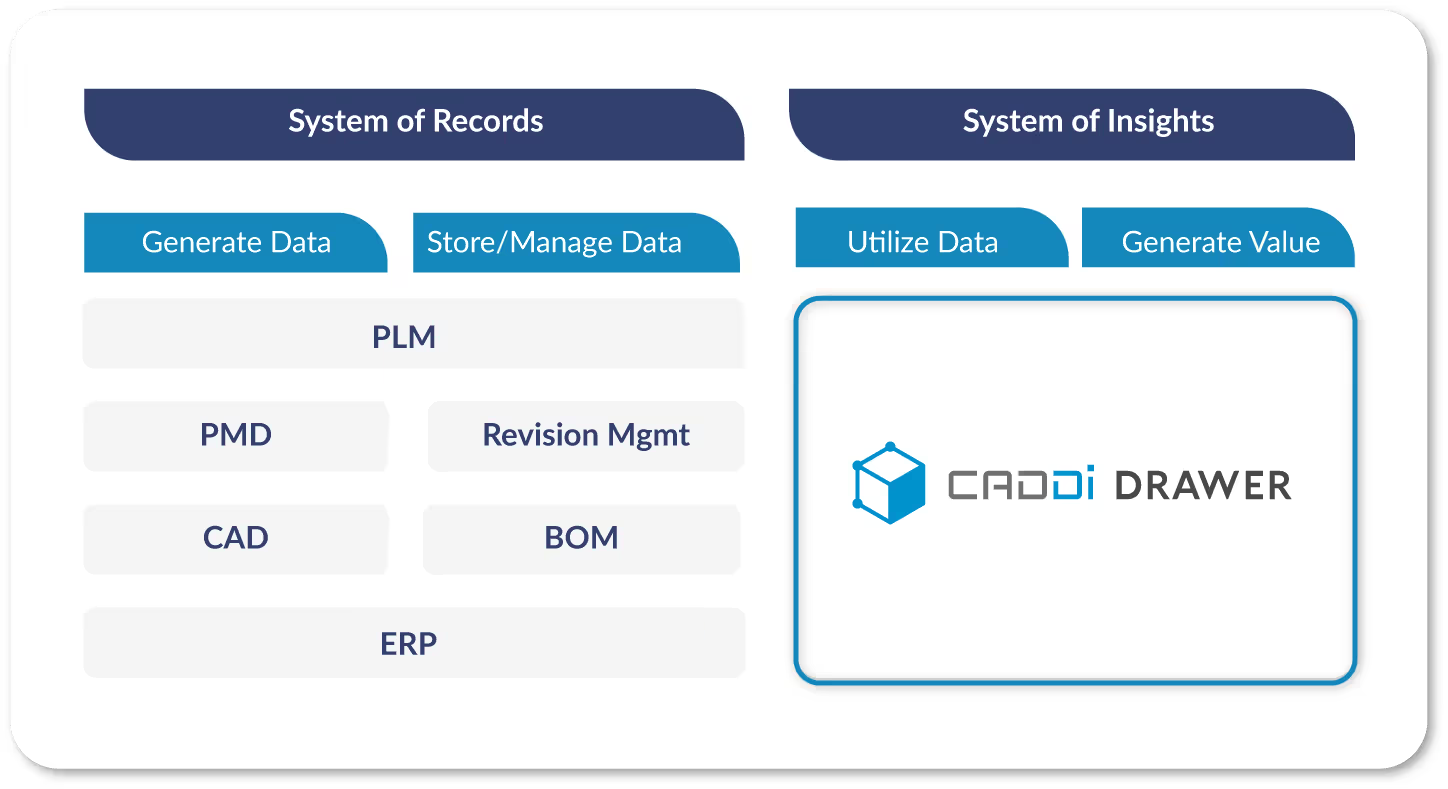
It has the unique capability to automatically convert unstructured data on drawings into structured data, making it accessible and analyzable alongside traditional structured data sources. This capability allows CADDi Drawer to offer comprehensive insights that were previously unattainable.
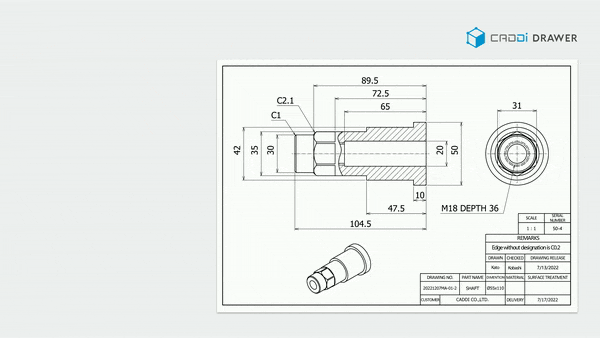
By turning drawings and other unstructured data into structured formats, CADDi Drawer enables procurement teams to perform deep analytics on a wider array of data points and significantly streamline procurement activities such as supplier selection. This capability opens up a multitude of opportunities for insights, from identifying non-obvious cost drivers in the supply chain to uncovering efficiencies in product specifications or procurement processes.
Procure-to-pay (P2P) refers to the process that businesses use to acquire goods and services, covering the journey from identifying a need for products or services to the payment of the invoice.
The P2P cycle begins with the identification of a need, followed by the selection of suppliers, negotiation of terms, and ends with the payment for goods and services received. However, this simplified overview belies the complexity inherent in each step, especially in a manufacturing context where precision, timing, and quality are paramount.
For instance, consider the case of a global manufacturing giant, Siemens. By integrating a cloud-based P2P solution, Siemens achieved a remarkable increase in process efficiency, reducing its procurement cycle time by over 50%. The software’s ability to provide real-time visibility into spending and supplier performance has been a game-changer, facilitating better decision-making and strategic supplier relationships.
Understanding the P2P Process
The history of procure-to-pay has evolved alongside advancements in business practices and technology. Initially, the P2P process was entirely manual, involving paper-based orders and invoices, which was time-consuming and prone to errors. As businesses sought more efficiency and control over their spending, electronic systems began to be developed in the late 20th century, introducing automation into various stages of the P2P process.
The advent of the internet and cloud computing further transformed P2P, enabling real-time collaboration between buyers and suppliers, centralized data management, and more sophisticated automation through e-procurement and ERP systems. Today, procure-to-pay solutions leverage advanced technologies such as AI and machine learning for predictive analytics, automated decision-making, and enhanced visibility across the entire procurement process.
This process includes several steps such as requisitioning, purchasing, receiving, invoice reconciliation, and payment. It involves multiple departments within an organization, including procurement, finance, and accounting, aiming to streamline purchasing processes, reduce costs, and ensure compliance with company policies.
Key Steps in the P2P Process
The Procure-to-Pay (P2P) process is a crucial component of an organization’s procurement function, covering the full cycle from identifying procurement needs to paying suppliers. It encompasses several key steps, each critical for ensuring efficient, effective procurement and financial processes within a company. Here’s a more detailed look at these steps and what makes each important:
Identify Needs
The first step involves identifying the need for goods or services within the organization. It’s important because it sets the foundation for the procurement process, ensuring that purchases align with business objectives and requirements.
Supplier Selection
This step involves researching and selecting the right suppliers based on criteria such as price, quality, reliability, and service. The importance of this step lies in establishing relationships with suppliers who can provide the best value and service to meet the organization’s needs.
Purchase Requisition
Employees submit a purchase requisition for the goods or services needed. This internal document is crucial for obtaining approval from the necessary managers or departments before making a purchase, ensuring that the procurement aligns with budget and policy.
Purchase Order Creation
Once a purchase requisition is approved, a purchase order (PO) is issued to the supplier. The PO is a legal offer to buy products or services. This step is important because it formalizes the buying intention and specifies the terms and conditions of the purchase.
Order Receipt and Inspection
When the goods or services are delivered, they must be received, inspected, and matched against the PO and the delivery documentation. This step is critical for ensuring that what was ordered has been delivered correctly and meets the specified quality standards.
Three-Way Matching
This involves matching the invoice received from the supplier against the PO and the delivery receipt. It’s a crucial step for verifying that the invoiced charges are accurate and correspond to what was ordered and received, helping to prevent overpayments or fraudulent charges.
Invoice Approval and Payment
Once the invoice is verified, it goes through an approval process before payment is made to the supplier. Timely payment is important for maintaining good supplier relationships and can also enable discounts for early payment in some cases.
Record Keeping
Finally, detailed records of the purchase, including the requisition, PO, delivery documentation, invoice, and payment details, are maintained. This step is crucial for audit purposes, budgeting, and financial planning.
Best Practices for Efficient P2P Processes
Adopting best practices in the P2P process can significantly enhance efficiency and effectiveness. Implementing procure-to-pay software is at the forefront of these practices, offering automation that streamlines the entire procurement cycle. A Gartner report highlights that organizations adopting cloud-based P2P suites can see a reduction in procurement cycle times by up to 50%.
Strengthening supplier relationships is another critical practice. A smooth and transparent P2P process not only improves operational efficiency but also fosters strong, mutually beneficial relationships with suppliers. This was evident in a case where a multinational corporation streamlined its P2P process, leading to a 40% improvement in supplier delivery times and a significant increase in supplier satisfaction scores.
Reducing costs and improving visibility into purchasing are also paramount. Automating the P2P process minimizes manual errors and operational costs, while providing real-time insights into procurement data. An industry survey revealed that companies that fully automate their P2P processes can achieve up to a 60% reduction in processing costs.
Leveraging Technology in P2P
The role of technology in revolutionizing the P2P process cannot be overstated. eProcurement systems facilitate seamless creation, approval, and management of purchase requisitions, significantly reducing cycle times. For instance, a global retail chain implemented an eProcurement system, leading to an 80% decrease in the time taken to process requisitions.
Automation plays a key role in enhancing efficiency across the P2P cycle. From automated purchase orders to invoice processing, technology eliminates manual bottlenecks, ensuring a smooth flow of operations. A healthcare provider reported a 70% decrease in invoice processing time after adopting an automated P2P system.
Lastly, data analytics empowers organizations to make informed decisions, optimize procurement strategies, and forecast demand more accurately. A study found that companies utilizing analytics in their P2P process improved their spend under management by 25% and realized a 15% improvement in cost savings.
Recent Trends in P2P
The P2P landscape is continually evolving, driven by technological advancements and shifting market dynamics. A notable trend is the rapid adoption of cloud-based P2P suites. A recent Gartner report predicts that over 50% of organizations will have implemented cloud-based P2P solutions by 2025. These systems offer greater flexibility, scalability, and efficiency, enabling companies to adapt quickly to market changes.
Another emerging trend is the increasing importance of environmental, social, and governance (ESG) standards in the procurement process. Companies are now evaluating suppliers not just on cost and quality, but also on their adherence to ESG criteria. This shift reflects a broader commitment to sustainable and ethical business practices.
Embracing the P2P evolution with CADDi Drawer
As the P2P Process stands on the brink of further evolution, CADDi Drawer is poised to play a pivotal role in embracing this evolution. Unlike traditional System of Record (SoR) tools that primarily focus on managing and storing structured data, CADDi Drawer operates as a System of Insight (SoI).

It has the unique capability to automatically convert unstructured data on drawings into structured data, making it accessible and analyzable alongside traditional structured data sources. This capability allows CADDi Drawer to offer comprehensive insights that were previously unattainable.

By turning drawings and other unstructured data into structured formats, CADDi Drawer enables procurement teams to perform deep analytics on a wider array of data points and significantly streamline procurement activities such as supplier selection. This capability opens up a multitude of opportunities for insights, from identifying non-obvious cost drivers in the supply chain to uncovering efficiencies in product specifications or procurement processes.
Ready to see CADDi Drawer in action? Get a personalized demo.
Subscribe to our Blog!
Related Resources


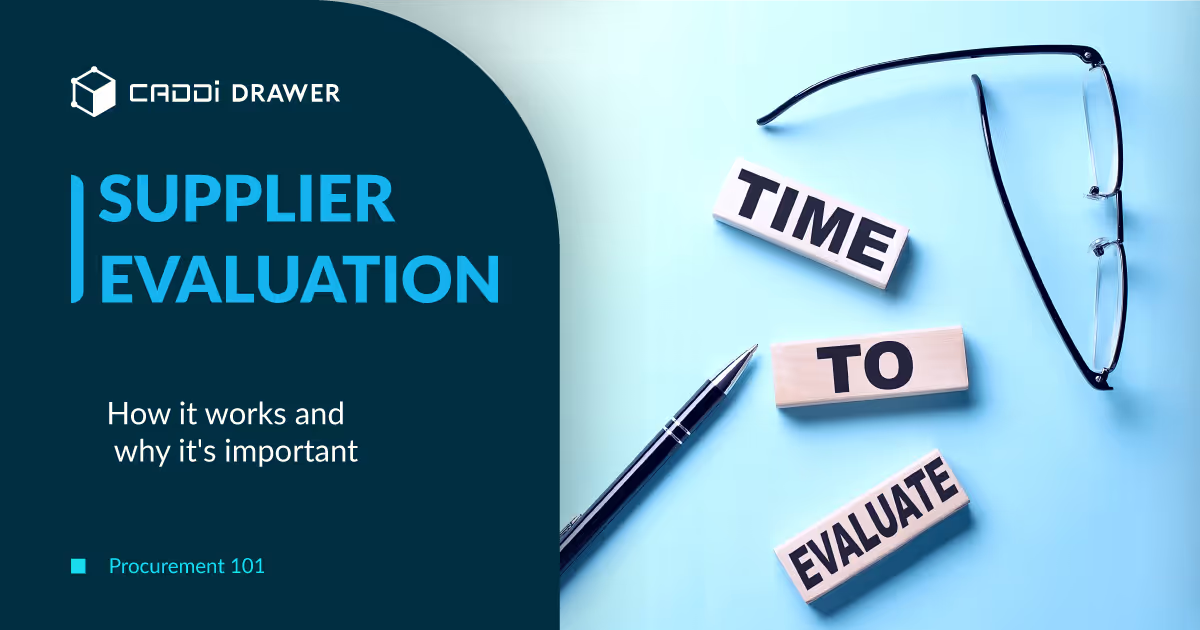





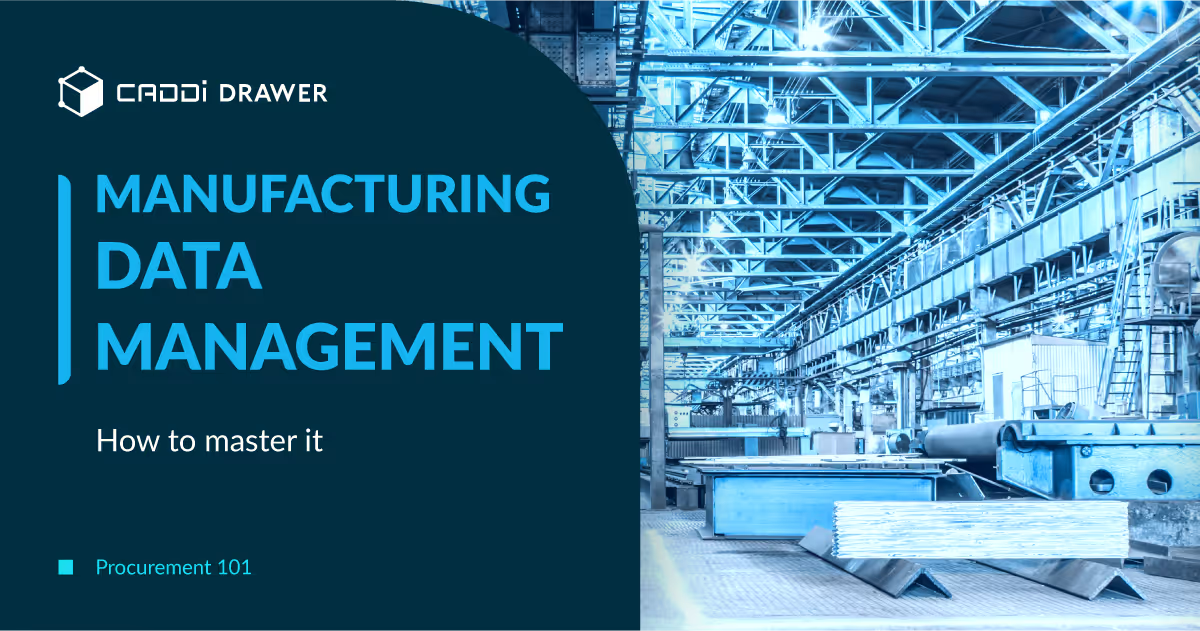

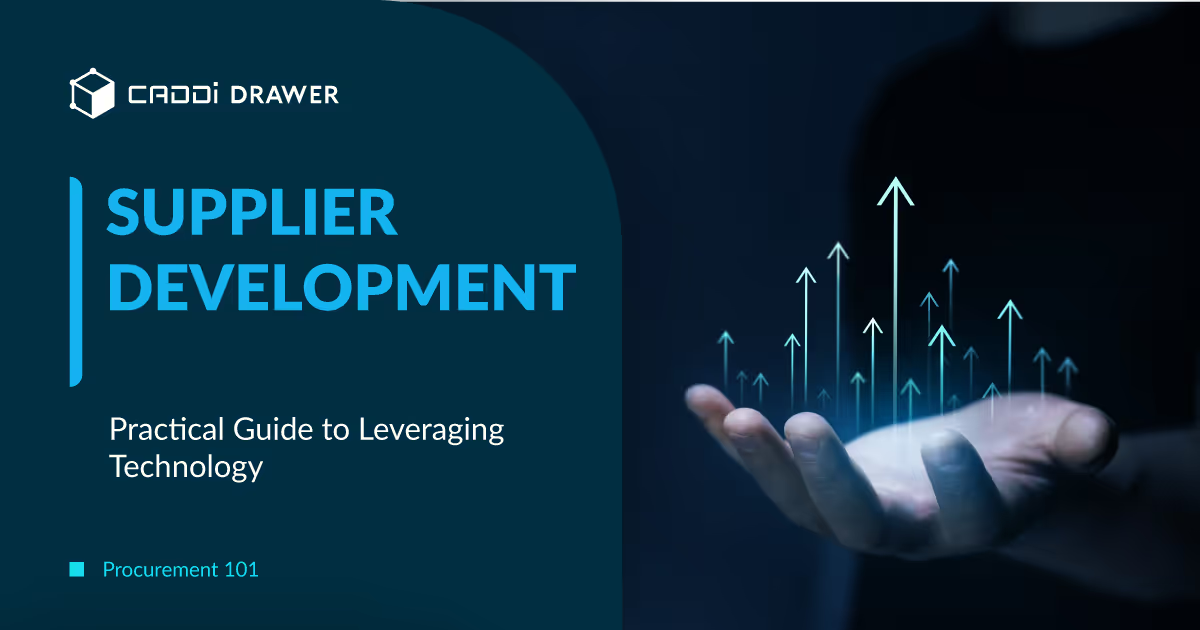

.svg)



.svg)
.svg)
.svg)


